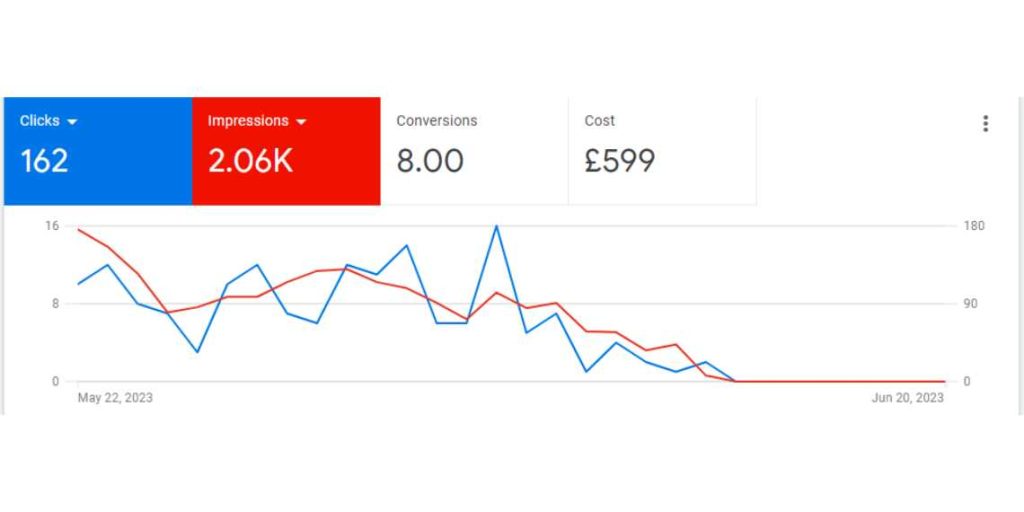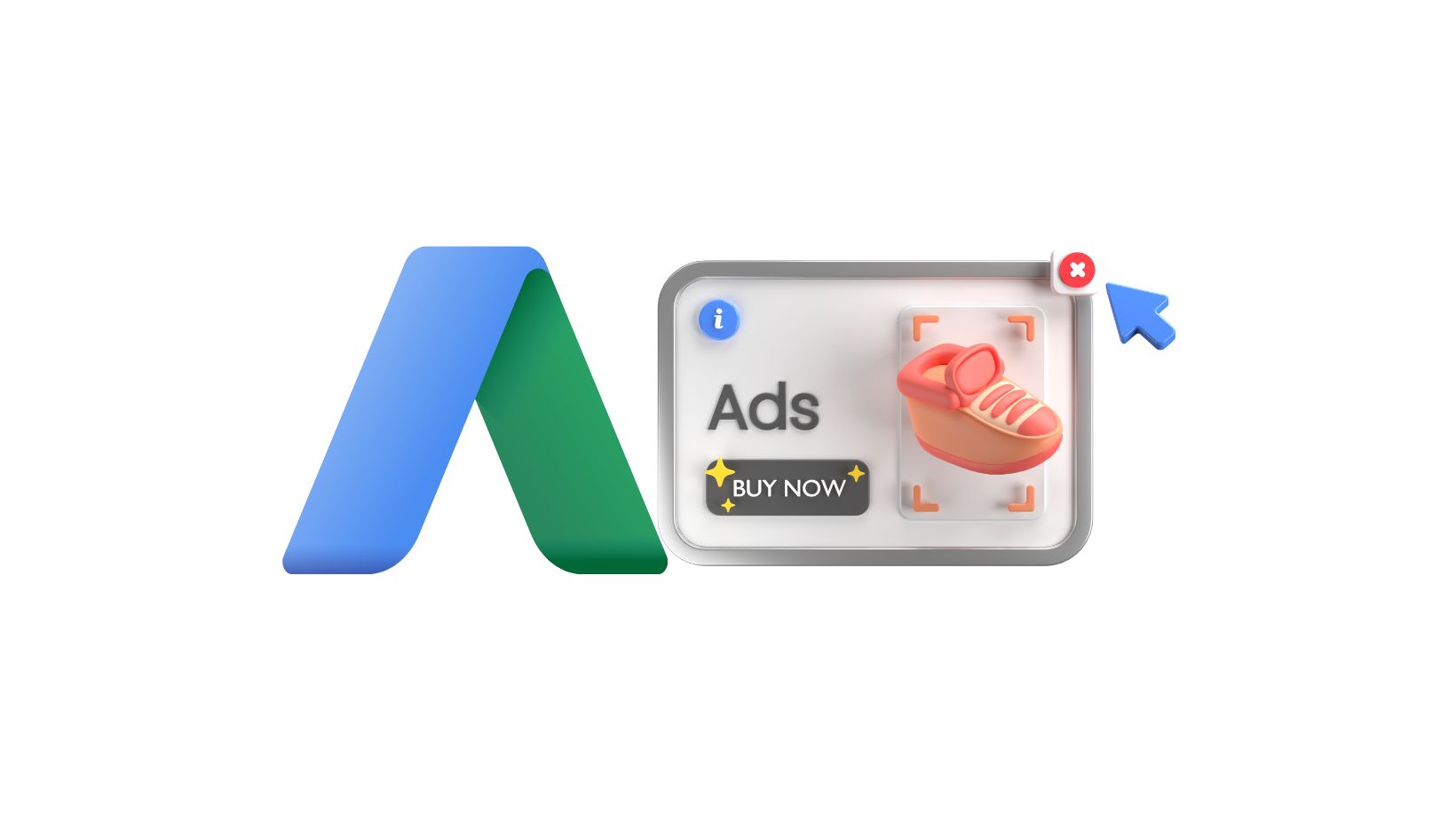Introduction
Running successful advertising campaigns on Google Ads requires careful monitoring and optimization. In order to gauge the effectiveness of your ad spend and identify areas for improvement, it’s essential to analyze key metrics. One such metric that can provide valuable insights is the Lin-Rodnitzky Ratio. In this blog post, we will delve into the details of the Lin-Rodnitzky Ratio and explain how it can be used to diagnose the health of your Google Ads account.
Understanding the Lin-Rodnitzky Ratio in Google Ads

The Lin-Rodnitzky Ratio is a simple calculation that compares the cost to acquire a customer for all your search terms with the cost to acquire a customer for search terms that resulted in at least one conversion (sale). The formula for the Lin-Rodnitzky Ratio is as follows:
Lin-Rodnitzky Ratio = CPA of all search queries / CPA of search queries with at least 1 conversion
The resulting ratio provides an indication of whether your ad account is being too conservative or too aggressive in its approach, potentially leading to wasted ad dollars.
Interpreting the Lin-Rodnitzky Ratio
To make sense of the Lin-Rodnitzky Ratio, let’s examine its different ranges and what they signify:
1. The Sweet Spot
Ideally, you should aim for a Lin-Rodnitzky Ratio between 1.5 and 2. This range indicates that your ad spend is being utilized effectively. Most of your keywords are generating sales, suggesting a healthy balance in your advertising strategy. When the ratio falls within this range, it’s a positive sign that your account is in good shape, demonstrating a smart approach to testing and sophistication in your campaigns.
2. Too High
If the Lin-Rodnitzky Ratio exceeds 2.5, it suggests that you’re spending too much on ads that aren’t resulting in conversions. This indicates a potential need for optimization and improvement. You might consider reviewing your targeting parameters, refining your ad messaging, or adjusting your bidding strategy to ensure you’re reaching the right audience with compelling ads that drive conversions.
3. Too Low
On the other hand, if the Lin-Rodnitzky Ratio falls below 1.5, it indicates that you might be playing it too safe with your ad spending. This cautious approach may cause you to miss out on opportunities to reach a wider audience and generate more sales. A ratio below 1.5 signals that you need to conduct additional testing to uncover untapped opportunities for efficient growth. Experiment with different keywords, ad formats, or targeting strategies to expand your reach and drive more conversions.
Benefits of the Lin-Rodnitzky Ratio in Google Ads

The Lin-Rodnitzky Ratio offers several benefits for evaluating the health of your Google Ads account:
Simplicity: With just one metric, the Lin-Rodnitzky Ratio provides a straightforward way to assess the efficiency of your ad spend.
Quick Diagnosis: Calculating the ratio takes only a few minutes, enabling you to quickly identify potential issues and areas for improvement.
Targeted Optimization: The ratio helps you pinpoint specific areas within your campaigns that may require optimization, such as keywords or ad groups with low conversion rates.
Strategic Decision-Making: By understanding the Lin-Rodnitzky Ratio, you can make informed decisions about optimizing your ad campaigns to improve overall performance and maximize your return on investment (ROI).
Example: Evaluating the Lin-Rodnitzky Ratio for an Online Shoe Store
Let’s consider an example of an online shoe store to better understand how the Lin-Rodnitzky Ratio works in practice. Here’s a sample data for a specific period:
- Total cost to acquire customers (CPA) for all search queries: $2,500
- Total cost to acquire customers (CPA) for search queries with at least 1 conversion: $1,200
To calculate the Lin-Rodnitzky Ratio, divide the CPA of all search queries by the CPA of search queries with at least 1 conversion:
Lin-Rodnitzky Ratio = $2,500 / $1,200 = 2.08
In this example, the Lin-Rodnitzky Ratio is 2.08, which falls within the desired sweet spot range of 1.5 to 2. This suggests that the ad spend for the online shoe store is being utilized effectively, and the majority of the keywords are generating sales.
If the ratio were significantly higher, let’s say 3.5, it would indicate that the store is spending too much on ads that aren’t leading to conversions. In such a case, optimization of the campaigns would be necessary to improve the efficiency of the ad spend.
Similarly, if the ratio were lower, for instance, 1.2, it would suggest that the store is being too conservative with ad spending and potentially missing out on sales opportunities. Additional testing and optimization would be required to uncover untapped growth possibilities.
Conclusion
Analyzing the health of your Google Ads account is crucial for maximizing the effectiveness of your ad campaigns. The Lin-Rodnitzky Ratio offers a simple yet powerful method to evaluate the efficiency of your ad spend and identify areas that need attention. By aiming for the sweet spot range of 1.5 to 2, you can ensure that you’re not wasting ad dollars on ineffective ads and that the majority of your keywords are generating sales. For ratios above or below this range, adjustments and optimization are necessary to improve your campaigns and drive better results. Utilize the Lin-Rodnitzky Ratio as a valuable tool in your Google Ads account management toolkit and make data-driven decisions to achieve advertising success.

Hello, I’m Ali Raza, the brain behind Digital Realm Trends.
Hailing from the vibrant world of digital marketing, I’ve honed my skills over years. Based on my experience, I’m here to unravel the complexities of digital marketing, analytics and paid marketing, crafted for individuals like you. Join me in uncovering the power of digital marketing tools and strategies, fueled by experimentation and insights.




